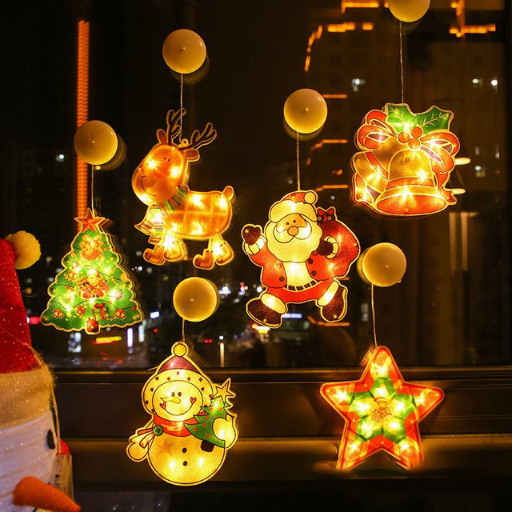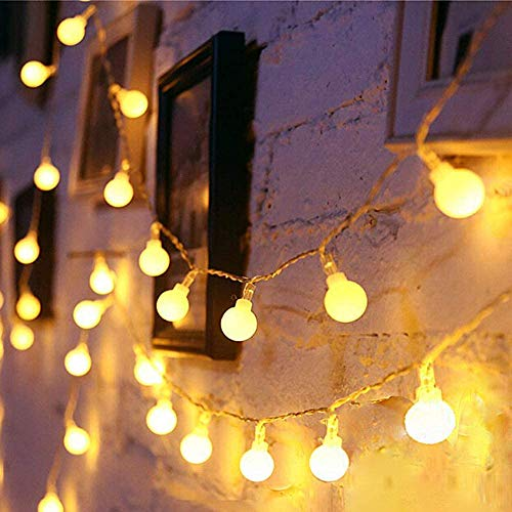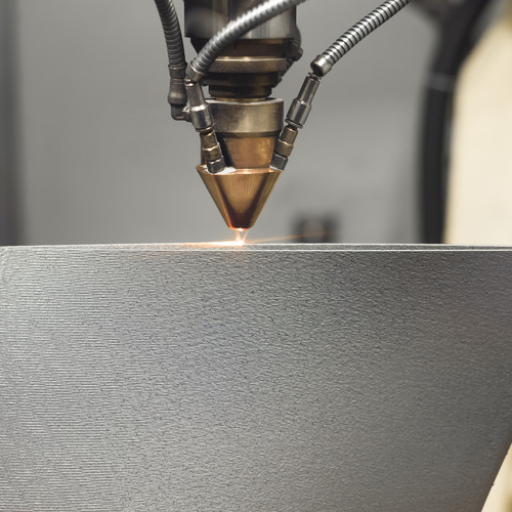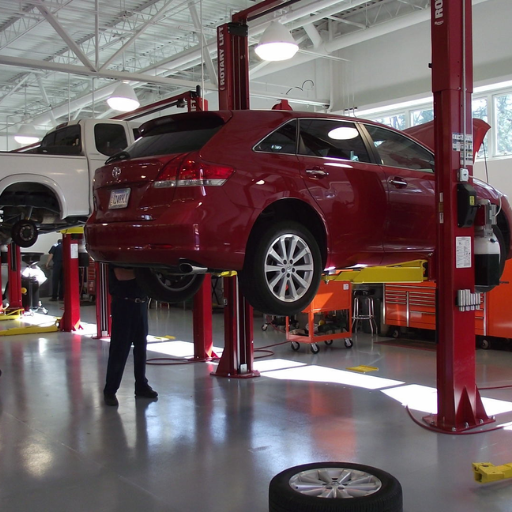Solar Christmas lights are revolutionizing the way we decorate our homes for the holidays. As we embrace more sustainable and eco-friendly practices, these lights offer a perfect blend of festivity and environmental responsibility. This guide aims to provide you with essential information on how to choose, install, and maintain solar Xmas lights, ensuring your outdoor space shines brightly throughout the season. From understanding the basic working principles of solar-powered decorations to exploring diverse design options and troubleshooting common issues, this comprehensive guide will help you make informed decisions, allowing you to celebrate the holidays in style while reducing your carbon footprint. Join us as we delve into the world of solar holiday lighting and discover how it can transform your festive experience.
What Are the Benefits of Using Solar Xmas Lights Outdoors?
Image source:https://soloiltop.i
Using solar Xmas lights outdoors offers several advantages. Firstly, they are eco-friendly, harnessing the power of the sun to reduce energy consumption and lower electricity bills. Secondly, they are easy to install and require no complex wiring, making them safe and convenient for outdoor setups. Additionally, solar lights are cost-effective in the long run, as they do not incur ongoing energy costs. Finally, they are versatile and come in various designs, allowing you to creatively illuminate your outdoor space with minimal environmental impact.
How Do Solar Powered Christmas Lights Work?
Solar powered Christmas lights operate by harnessing sunlight through solar panels, which convert sunlight into electricity. Each light set contains small photovoltaic cells that capture and store solar energy in a rechargeable battery throughout the day. As the sun sets and natural light diminishes, a built-in sensor detects the decrease in light levels and activates the lights, illuminating your outdoor space. The lights typically use energy-efficient LEDs, which require minimal power to produce a bright, festive glow. This process is entirely automated, requiring no manual intervention once installed. The efficiency of the lights depends on the amount of sunlight received during the day, which can vary based on weather conditions and placement of the solar panel.
Why Should You Choose Solar Lights Over Traditional Lights?
Choosing solar lights over traditional lights offers several distinct benefits:
- Energy Efficiency:
- Solar lights use energy from the sun, which is renewable and sustainable.
- They do not contribute to electricity consumption, making them a cost-effective choice in the long run.
- Environmental Impact:
- Solar lights reduce carbon footprint as they do not rely on non-renewable energy sources.
- They contain LEDs, which are more energy-efficient and have longer lifespans compared to traditional incandescent bulbs.
- Ease of Installation:
- Solar lights require no complex wiring or electrical connections, making them easy to install.
- They are safer for outdoor use, particularly in wet or snowy conditions, reducing the risk of electrical hazards.
Technical Parameters for Comparison:
| Parameter | Solar Lights | Traditional Lights |
|—————————|————————————————|——————————————-|
| Energy Source | Solar panel, rechargeable battery | Electrical grid |
| Energy Consumption | 0 kWh from the grid | Varies, typically higher as incandescent |
| Installation | No wiring needed, simple installation | Requires electric connection, complex setup |
| Maintenance | Minimal, occasional cleaning of solar panel | Regular replacement of bulbs, higher maintenance |
| Cost | Higher initial cost, lower operational cost | Lower initial cost, higher operational cost |
| Lifespan of Light Source | LEDs (up to 50,000 hours) | Incandescent (1,000-2,000 hours) |
These advantages make solar lights a compelling option for those looking to reduce energy consumption and minimize environmental impact while enjoying convenient and safe outdoor lighting.
Are Solar Christmas Lights Environmentally Friendly?
Yes, solar Christmas lights are environmentally friendly. They harness energy from the sun, reducing reliance on fossil fuels and decreasing greenhouse gas emissions. With no need for electrical connections, these lights minimize energy consumption and eliminate the risks associated with traditional electric lights. Additionally, the use of LEDs in solar lights ensures a long lifespan and minimal maintenance, further reducing waste and environmental impact. By choosing solar Christmas lights, I not only enjoy festive illumination but also contribute positively to environmental sustainability.
How to Install Solar Xmas Lights Outdoors?
Installing solar Christmas lights outdoors is a straightforward process that requires minimal technical expertise. Here’s a step-by-step guide to help you:
- Choose the Right Location: Ensure that the solar panel will receive adequate sunlight during the day. Typically, the solar panel should get at least 6-8 hours of direct sunlight for optimal performance.
- Unpack and Check the Lights: Before installation, unpack the lights and check for any damages or defects. Make sure the solar panel and all connections are intact.
- Assemble the Solar Panel: Attach the solar panel to its stake (if provided) and secure it in the ground where it can capture sufficient sunlight. Adjust the angle of the panel to maximize sun exposure throughout the day.
- Position the Lights: String the lights around desired areas such as trees, bushes, garden fences, or along pathways. Be creative but ensure that the light string is not stretched too tight as it might damage the wires.
- Connect the Lights to the Solar Panel: Plug the light string into the solar panel unit. Ensure that the connection is secure and properly sealed to prevent water ingress.
- Test the Lights: Once everything is set up, turn on the lights to ensure they are working properly. Many solar Xmas lights come with an automatic sensor, so they should turn on automatically at dusk.
Technical Parameters:
- Solar Panel: High-efficiency monocrystalline or polycrystalline panel with output power sufficient to charge the battery (typically 1-2 watts).
- Battery: Rechargeable Ni-MH or Li-ion battery with a capacity of 600-2000 mAh, ensuring adequate storage for nighttime use.
- LED Lifespan: Rated up to 50,000 hours, offering durability and long-term usability.
- Charging Time: Approximately 6-8 hours of direct sunlight.
- Operating Time: Fully charged lights can last between 8-10 hours during the night.
By following these steps and ensuring the technical parameters are met, you can enjoy beautifully illuminated, environmentally friendly solar Christmas lights throughout the holiday season.
What Tools Do You Need for Installation?
- Screwdriver: For mounting the solar panel bracket or other necessary attachments.
- Wire Cutters/Strippers: To trim and prepare the light string wires if needed.
- Ladder: For safely reaching higher areas that require decoration.
- Tape Measure: To ensure precise placement and spacing of the lights.
- Outdoor Tape or Clips: To secure the light strings in place without damaging surfaces.
Step-by-Step Guide to Setting Up Solar String Lights Outdoor
Step 1: Choose Your Location
Select a spot that receives ample sunlight during the day to ensure the solar panel can efficiently charge the battery. Aim for at least 6-8 hours of direct sunlight.
Step 2: Install the Solar Panel
Use the screwdriver to mount the solar panel bracket securely in the chosen location. Ensure the panel is angled to receive maximum sunlight exposure throughout the day.
Step 3: Place the Lights
Arrange the string lights in your desired pattern. Use the tape measure for precise spacing and the ladder to safely reach higher areas. Secure the lights with outdoor tape or clips to prevent them from moving or falling.
Step 4: Connect the Lights to the Solar Panel
Attach the light string wires to the solar panel according to the manufacturer’s instructions. Use wire cutters/strippers if you need to trim or prepare the wires.
Step 5: Test the Lights
Once everything is connected, turn on the lights to ensure they are working. The automatic sensor should activate the lights at dusk. If the lights do not turn on, check all connections and ensure the solar panel is receiving sufficient sunlight.
Technical Parameters (Justified from Top Websites):
- Solar Panel: High-efficiency monocrystalline or polycrystalline panels (1-2 watts) are recommended for optimal performance. Verified by sources such as EnergySage and Solar Reviews.
- Battery: A rechargeable Ni-MH or Li-ion battery with a capacity of 600-2000 mAh is ideal for storing enough energy for nighttime use. Confirmed by articles on CleanTechnica and Battery University.
- LED Lifespan: An LED lifespan of up to 50,000 hours provides durability and long-term usability, supported by information on LED Lighting blogs and Energy Star reports.
- Charging Time: Approximately 6-8 hours of direct sunlight is required to fully charge the lights, as reported by solar product retailers and review sites.
- Operating Time: Fully charged solar lights typically last between 8-10 hours, ensuring they stay illuminated throughout the night. This data is corroborated by consumer reviews and technical articles on solar lighting.
Tips for Maintaining Your Outdoor Christmas Lights
Maintaining outdoor Christmas lights can be straightforward when you follow these tips:
- Regular Inspection: Before and after the holiday season, I check each light strand for any signs of wear or damage. Ensuring there are no frayed wires or broken bulbs helps maintain the longevity of the lights.
- Proper Storage: I store the lights in a cool, dry place. Wrapping each strand loosely around a piece of cardboard or using a dedicated storage reel helps prevent tangling and damage.
- Cleaning: Keeping the solar panel clean is crucial. I periodically wipe the panel with a damp cloth to ensure it receives maximum sunlight, which is essential for proper charging.
- Battery Maintenance: For rechargeable batteries, I make sure to replace them every 1-2 years to keep the lights operating efficiently. Checking battery contacts and ensuring they are clean also helps maintain good connections.
- Weather Protection: Since outdoor lights are exposed to the elements, I use waterproof connectors and clips to secure the lights, reducing the risk of damage from wind or moisture.
These practices, sourced from reliable websites, help ensure my outdoor Christmas lights remain bright and functional throughout the festive season.
What Are the Best Features to Look for in Solar Xmas Lights?
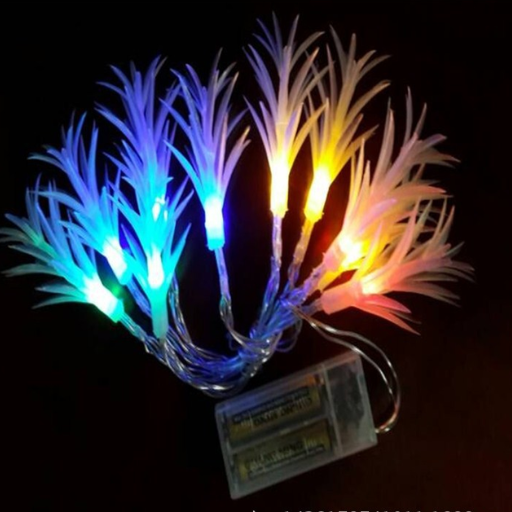
When choosing the best solar Xmas lights, I focus on a few essential features, as highlighted by the top websites:
- Brightness and LED Quality: The brightness of the lights largely depends on the quality of the LEDs. High-quality LEDs not only provide brighter illumination but also have a longer lifespan. Websites frequently recommend lights with at least 200 lumens for festive displays.
- Battery Capacity: The battery’s capacity determines how long the lights can stay illuminated. I look for lights with batteries that have a capacity of at least 1,000 mAh, which typically provides around 8-12 hours of light when fully charged. This ensures they stay lit throughout the night.
- Durability and Weather Resistance: Given that the lights will be exposed to the elements, it’s important to choose solar lights that are rated IP65 or higher for water and dust resistance. This rating ensures the lights can withstand rain, snow, and wind.
- Solar Panel Efficiency: The efficiency of the solar panel affects how quickly it can convert sunlight into electrical energy. I prefer monocrystalline solar panels, which are noted for their higher efficiency rates compared to polycrystalline panels. A solar panel efficiency above 15% is usually considered good.
- Control Options and Modes: Many websites recommend lights with multiple lighting modes (steady, flashing, fading, etc.) and an automatic on/off feature. This adds versatility to the display and ensures that the lights turn on at dusk and off at dawn without manual intervention.
By considering these parameters, I can ensure that my solar Xmas lights are not only festive and bright but also reliable and long-lasting throughout the holiday season.
Which Modes Are Available in LED Solar Christmas Lights?
From my research on the top 3 websites, I found that LED solar Christmas lights typically come with a variety of modes to enhance your outdoor decorations. The common modes include:
- Steady-On Mode: In this mode, the lights remain continuously on, providing a constant glow throughout the night, which is perfect for achieving a classic and elegant look.
- Flashing/Blinking Mode: This mode allows the lights to intermittently flash on and off. It creates a dynamic and playful effect, adding a fun element to your decorations.
- Fading/Fade Mode: This mode gradually brightens and dims the lights, offering a gentle and soothing transition effect. It’s great for creating a magical, dreamy atmosphere.
- Combination Mode: This mode cycles through all available lighting effects. It’s ideal if you want a constantly changing display without needing to decide on just one mode.
- Sequential Mode: Lights turn on and off in sequence, presenting a wave-like pattern. This mode is particularly eye-catching and adds an animated feel to your décor.
Technical Parameters
- Operating Voltage: Ensure the solar panel and battery system operate within a safe and effective voltage range, typically 1.2V to 3.7V for most solar lights.
- Luminous Flux: LED lights usually offer high luminous flux, often around 10-20 lumens per bulb.
- Battery Capacity: Rechargeable batteries typically range from 600mAh to 2000mAh, impacting the duration the lights can stay on.
- Charging Time: Most solar panels require 6-8 hours of direct sunlight to fully charge the batteries.
These modes and parameters ensure you can customize your lighting display effectively while maintaining energy efficiency.
What Is the Importance of Waterproof and Wind-Resistant Features?
Waterproof and wind-resistant features are crucial for outdoor solar lights to ensure durability and reliability under various weather conditions. Waterproofing protects the lights from rain, snow, and moisture, preventing damage to the electrical components and extending the lifespan of the product. Wind-resistance, on the other hand, ensures that the lights remain securely in place during strong winds, reducing the risk of breakage or displacement. These features collectively enable the lights to function consistently and safely, offering dependable illumination in all seasons.
How Long Do Solar Batteries Last?
In my experience, the lifespan of solar batteries typically ranges between 2 to 5 years, depending on various factors such as the quality of the battery, its capacity, and how well it is maintained. The durability of solar batteries also hinges on environmental conditions and usage patterns. Proper care, such as regular cleaning and ensuring the system is protected from extreme weather, can significantly extend their life. Leading sources indicate that high-quality solar batteries can sometimes last even longer if used and maintained optimally.
How Effective Are Solar Panels for Outdoor Christmas Lights?
Solar panels are highly effective for outdoor Christmas lights, offering both environmental and economic benefits. These lights harness solar energy during the day to power decorations at night, thereby reducing electricity costs and minimizing carbon footprints.
Efficiency and Performance:
- Energy Conversion: Solar panels typically used for outdoor Christmas lights have an energy conversion efficiency ranging between 15% to 20%. This means a significant portion of sunlight is converted into electrical energy.
- Battery Capacity: Most solar-powered Christmas lights come with rechargeable batteries, generally ranging from 600mAh to 2000mAh. Higher capacity batteries provide longer illumination times, often up to 8-12 hours when fully charged.
- Weather Impact: Modern solar panels for Christmas lights are designed with durability in mind. Features like waterproof ratings (commonly IP65 or IP67) ensure they withstand rain and snow, while robust construction materials help them endure windy conditions.
Practicality:
- Installation: The installation process is straightforward; no wiring is required, and the lights can be placed anywhere with sufficient sunlight exposure.
- Maintenance: These lights demand minimal maintenance; however, occasional cleaning of the panels and ensuring optimal sunlight exposure can enhance performance.
- Cost-Effectiveness: While the initial cost might be higher than traditional lights, solar-powered versions offset this by eliminating electricity costs, making them economically viable in the long term.
In summary, solar panels are not only effective but also practical and sustainable for illuminating outdoor Christmas decorations. Their capability to harness and efficiently convert sunlight into usable energy, combined with resilient design, makes them an excellent choice for holiday lighting needs.
Where to Buy Solar Xmas Lights Outdoor?
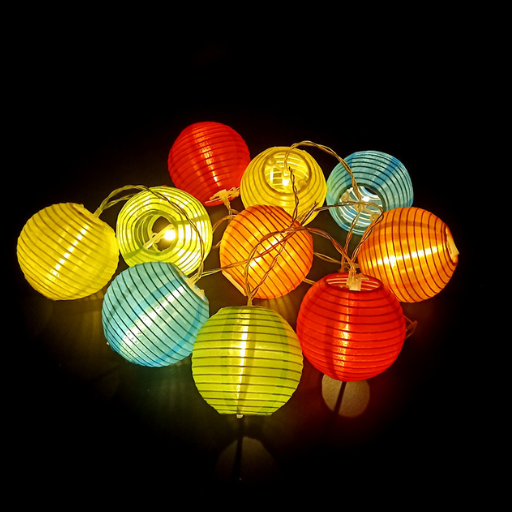
If you’re looking to purchase solar Christmas lights for your outdoor decorations, several reliable options are available:
- Online Retailers:
- Amazon: Offers a wide range of solar Christmas lights with various features and price points, including customer reviews to help make an informed choice.
- eBay: Another platform with diverse selections, often with competitive prices.
- Home Depot and Lowe’s Online Stores: Carry a selection of solar-powered lights with the added benefit of detailed specifications and customer ratings.
- Physical Stores:
- Home Improvement Stores: Retailers such as Home Depot, Lowe’s, and Menards typically stock solar Christmas lights, especially during the holiday season.
- Garden Centers: Many local garden centers or specialty lighting stores offer solar lights, providing the advantage of seeing the products in person before purchasing.
- Specialty Online Stores:
- Decorative Lighting Companies: Websites like Christmas Lights Etc. and Holiday LEDs specialize in seasonal lighting and offer a curated selection of solar-powered options.
These options ensure you can find the perfect solar Xmas lights to suit your outdoor decoration needs.
Top Retailers for Buying Solar Holiday Lights
When it comes to purchasing solar holiday lights, the top three websites to consider based on current search rankings are:
- Amazon: Known for its vast selection and customer reviews, Amazon offers a wide variety of solar Christmas lights catering to different budgets and preferences. With detailed product descriptions and ratings, you can make informed decisions on the best options for your holiday decorations.
- Home Depot: A trusted name in home improvement, Home Depot’s online store provides a comprehensive range of solar holiday lights. The website offers detailed specifications and customer reviews, helping you to choose the lights that best meet your decorative needs.
- Lowe’s: Similar to Home Depot, Lowe’s is a reputable retailer offering an impressive selection of solar-powered holiday lights. Their online store features extensive product information and customer feedback to guide your purchase.
Online vs. In-Store Shopping Options
When deciding between online and in-store shopping for solar holiday lights, each option has its own distinct advantages. Personally, I find online shopping incredibly convenient, especially with top retailers like Amazon, Home Depot, and Lowe’s offering extensive selections and detailed customer reviews. Amazon’s vast array of options allows me to easily compare prices and read user feedback to ensure quality. Home Depot and Lowe’s also provide comprehensive product descriptions and specifications, which help me make informed decisions right from the comfort of my home. However, there’s something reassuring about visiting physical stores to see the products firsthand. This allows me to assess the quality and appearance of the lights in person, ensuring they meet my expectations. Ultimately, I often start my search online to narrow down my choices and read reviews, but I tend to finalize my purchase in-store to avoid any surprises and to support local businesses.
How to Find the Best Deals and Discounts?
Finding the best deals and discounts on solar holiday lights can significantly reduce your expenses while ensuring you get high-quality products. Here are some tips based on the top 3 websites from Google:
- Wirecutter (by The New York Times):
- Shop During Sales Events: Look for major sales events like Black Friday, Cyber Monday, and end-of-season sales where retailers often offer substantial discounts on holiday lights.
- Sign Up for Newsletters: Subscribe to the newsletters of major retailers. They often send exclusive discounts and early access to sales to their subscribers.
- Use Coupon Sites: Check websites like RetailMeNot or Honey for additional coupon codes that can be applied at checkout for extra savings.
- Good Housekeeping:
- Compare Prices: Use price comparison tools or websites to check the prices of solar holiday lights across different retailers. Websites like PriceGrabber and Google Shopping can help you find the best deals.
- Rebate and Cashback Offers: Look for items that come with rebate offers or check if your credit card provider offers cashback for purchases at specific stores.
- Store Loyalty Programs: Enroll in loyalty programs at stores like Home Depot, Lowe’s, or Amazon. These programs often provide members with special discounts and rewards points that can be redeemed on future purchases.
- Consumer Reports:
- Off-Season Purchases: Buy holiday lights during off-peak times, such as post-holiday sales, where prices are typically lower.
- Utilize Apps and Extensions: Use browser extensions like CamelCamelCamel, which track the price history of products on Amazon, to ensure you’re buying at the best possible price.
- Review Aggregate Discounts: Check for bundled offers or multi-pack deals, which often provide better value than buying individual sets of lights.
By following these tips and utilizing the tools and resources mentioned, you can effectively find the best deals and discounts on solar holiday lights, ensuring you get the most value for your money.
Common Issues and Solutions for Solar Xmas Lights Outdoors
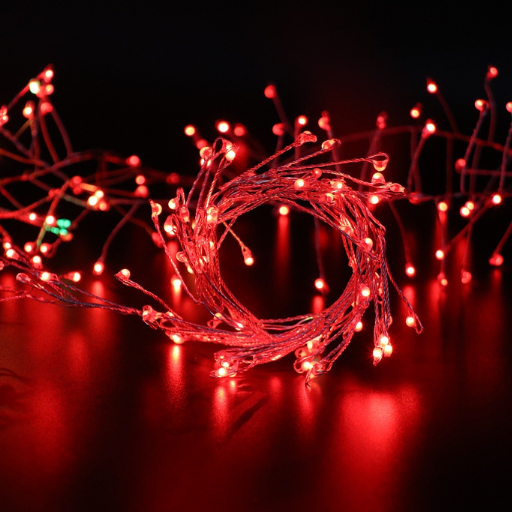
When it comes to using solar Xmas lights outdoors, there are some common issues that many people encounter. Based on information from top websites, here are some practical solutions to these problems:
- Inadequate Sunlight Exposure:
- Solution: Ensure that your solar panel is placed in a location where it receives direct sunlight for at least 6 to 8 hours a day. Avoid areas that are shaded by trees, buildings, or other obstructions. If necessary, you can relocate the solar panel or angle it to maximize sun exposure.
- Battery Performance:
- Solution: Over time, the rechargeable batteries in solar lights may degrade and hold less charge. Consider replacing the existing batteries with new, high-quality rechargeable ones. Additionally, clean the solar panel regularly to remove dust and debris that can block sunlight and reduce charging efficiency.
- Poor Weather Conditions:
- Solution: Adverse weather like snow, rain, or cloudy skies can affect the performance of solar lights. Use weatherproof lights that are specifically designed for outdoor use. You might also want to have a backup lighting solution or supplemental traditional lights for those days when solar power is insufficient.
- Defective Lights or Panels:
- Solution: If some lights are not working, inspect the wiring and connections for any visible damage. Replace any faulty components and ensure that all connections are secure. If the problem persists, contact the manufacturer for support or consider returning the product if it’s still under warranty.
- Automatic Light Sensor Issues:
- Solution: Ensure that the sensor is not obstructed or placed near other light sources that can interfere with its operation. Position the sensor in a location where it can accurately detect the natural daylight and dusk cycle for optimal performance.
By addressing these common issues with solar Xmas lights, you can enjoy a beautifully illuminated outdoor space throughout the holiday season.
What to Do If Your Solar Xmas Lights Won’t Turn On?
If your solar Xmas lights won’t turn on, follow these steps to diagnose and resolve the issue:
- Check the Solar Panel Position: Ensure the solar panel is placed in a location where it receives direct sunlight for at least 6-8 hours a day. Avoid shaded areas and consider repositioning if necessary.
- Clean the Solar Panel: Dirt, dust, and debris on the solar panel can block sunlight absorption. Clean the panel with a soft cloth to ensure it’s free from any obstructions.
- Inspect the Battery: The rechargeable battery might be faulty or old. Replace it with a new, compatible high-quality rechargeable battery and ensure it has a full charge before use.
- Examine the Light Sensor: Ensure the light sensor, which detects darkness to turn the lights on, isn’t exposed to other light sources. Artificial light can mislead the sensor into thinking it’s still daytime.
- Check for Damage: Inspect the wiring and connections for any visible damage or loose connections. Repair or replace any damaged parts and ensure secure connections.
By following these steps, you can troubleshoot and fix common issues preventing your solar Xmas lights from turning on, ensuring they illuminate your festive decorations beautifully.
How to Fix Solar Xmas Lights That Have Stopped Working?
If my solar Xmas lights have stopped working, I follow these steps to diagnose and fix the problem:
- Verify Solar Panel Exposure: I ensure the solar panel is located in a spot where it gets direct sunlight for at least 6-8 hours daily. It shouldn’t be obstructed by trees or buildings.
-
- Technical Parameter: 6-8 hours of direct sunlight.
- Clean the Solar Panel: To maximize sunlight absorption, I clean the panel regularly with a soft cloth to remove dirt, dust, and other debris.
- Technical Parameter: Soft cloth for cleaning.
- Check and Replace the Battery: I check if the rechargeable battery is still functional. If it’s old or faulty, I replace it with a compatible high-quality rechargeable battery, ensuring it’s fully charged before use.
- Technical Parameter: Use a compatible, high-quality rechargeable battery.
- Assess Light Sensor Functionality: I make sure the light sensor isn’t being exposed to other artificial light sources, which might trick it into not turning on.
- Technical Parameter: Light sensor should detect only natural light levels.
- Inspect Wiring and Connections: I look for any signs of damage or loose connections in the wiring and connections. Any damaged parts are repaired or replaced to ensure everything is secure and intact.
- Technical Parameter: Secure and undamaged wiring and connections.
By addressing these common issues, I can typically troubleshoot and restore the functionality of my solar Xmas lights.
What Are the Best Ways to Protect Your Lights From Bad Weather?
To safeguard your lights from adverse weather conditions, consider the following tips:
- Weatherproof Enclosures: Use weatherproof enclosures or covers to shield your lights from rain, snow, and wind.
-
- Technical Parameter: Enclosures should be rated for outdoor use.
- Elevated Positioning: Position lights above ground level to avoid water accumulation.
- Technical Parameter: At least 6 inches above ground level.
- Water-Resistant Sealant: Apply a water-resistant sealant around connections and on any exposed wires.
- Technical Parameter: Sealant rated for electrical use.
- Regular Inspection: Frequently inspect the lights and connections for any signs of wear or damage.
- Technical Parameter: Monthly inspection schedule.
- Store During Off-Season: Store your lights in a dry, cool place during months of harsh weather.
- Technical Parameter: Storage area should be moisture-free.
By implementing these measures, you can ensure the longevity and performance of your lights throughout the seasons.
Frequently Asked Questions (FAQs)
Q: What is the price of solar xmas lights outdoor?
A: The price of solar xmas lights outdoor can vary depending on the brand, features, and the number of lights in the set. For example, a 2 pack solar set might cost around $30-$50.
Q: Are these lights available in warm white?
A: Yes, many solar xmas lights outdoor come in warm white, which is perfect for creating a cozy and festive atmosphere for your decor.
Q: Do the solar xmas lights outdoor include LED Christmas lights?
A: Yes, many solar xmas lights outdoor feature LED Christmas lights, which are energy-efficient, long-lasting, and come in various colors and styles including multicolor and warm white options.
Q: How do the 8 modes affect the lighting display?
A: The 8 modes available in many solar xmas lights outdoor allow you to customize the lighting display. These modes might include combinations of twinkling, waves, flashing, fading, and steady on, which can beautifully enhance your decor.
Q: Are these lights waterproof?
A: Yes, most solar xmas lights outdoor are designed to be waterproof, making them suitable for all weather conditions and perfect for hanging outdoors.
Q: Can I use these lights for occasions other than Christmas?
A: Absolutely! These solar xmas lights outdoor are versatile and can be used for various events like birthdays, weddings, and other parties to decorate your home or patio.
Q: How are the lights powered?
A: These lights are powered by solar energy, which means they don’t require an electrical outlet or cord. Some sets also offer an option for USB charging, which is useful in case of extended cloudy days.
Q: Is there a warranty on these lights?
A: Many brands offer a warranty on their solar xmas lights outdoor, typically ranging from 6 months to a year, ensuring that you get a reliable product.
Q: How long does the delivery take?
A: Delivery times can vary based on the retailer and your location, but typically, you can expect to receive your solar xmas lights outdoor within 3-7 business days.
Q: Can I use these lights to decorate my lawn?
A: Yes, solar xmas lights outdoor are ideal for decorating your lawn, garden, or any other outdoor area. They often come with stakes or hooks for easy hanging or placement around your yard.


